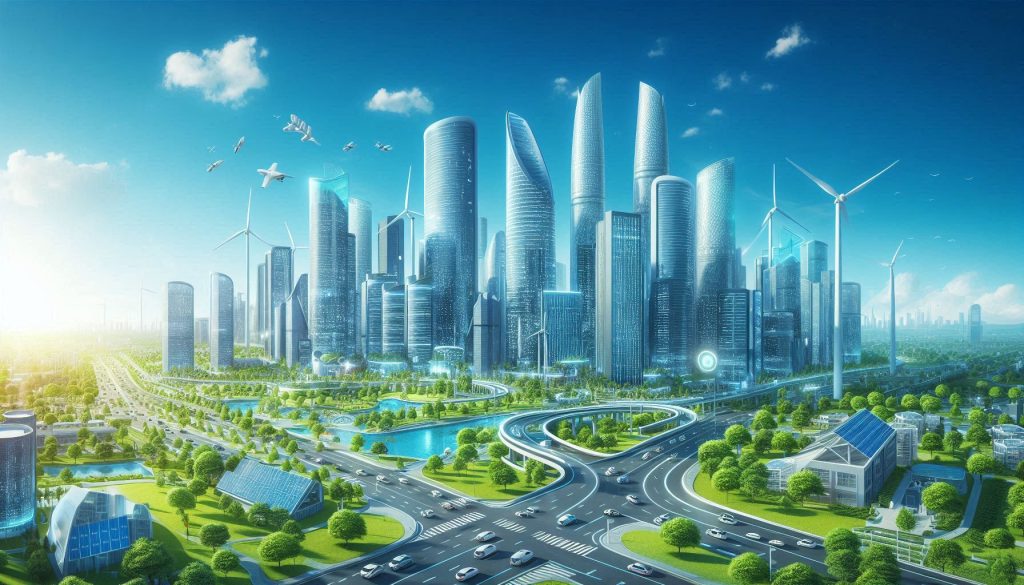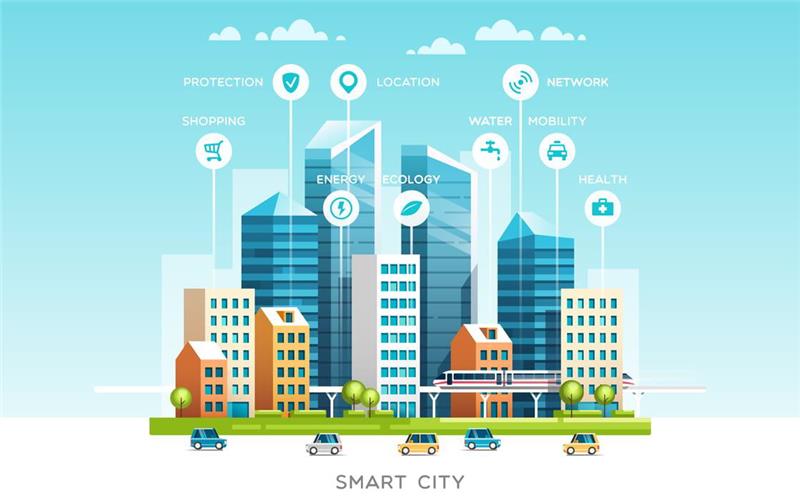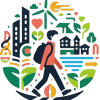What is a smart city?

Technology, infrastructure, sustainability and people
Learning Objectives
- Understand and define the key concepts of a smart city.
- Explore the technological, infrastructural, environmental, and social components of smart urban development.
- Analyze the historical evolution from Smart City 1.0 to 3.0.
- Recognize the role of digital tools in enhancing sustainability, inclusivity, and citizen well-being.
6 min read
Course Overview
INTRODUCTION
Cities are the beating heart of human civilization, and as our challenges grow more complex, so too must our solutions. Smart cities are the response to 21st-century urban challenges—combining digital technologies, sustainability principles, and people-centered planning to create efficient, inclusive, and liveable urban environments.
A smart city uses data and technology to improve the quality of life for its residents, reduce environmental impact, and enhance city services. Yet, smart cities are not only about infrastructure or apps—they are about how technology is used to benefit people, empower communities, and respond to real-time challenges.

1. WHAT IS A SMART CITY?
Smart cities bring together digital infrastructure, environmental responsibility, and active citizen engagement. At their core, smart cities leverage information and communication technologies (ICT) and Internet of Things (IoT) to optimize city functions and drive economic, environmental, and social well-being.
Definitions by leading institutions include:
- OECD: Smart cities leverage digitalization to enhance well-being and foster more efficient, inclusive urban environments.
- European Commission: Smart cities use digital solutions to improve networks and services, reduce emissions, and support cleaner, safer, and more inclusive urban living.
Smart cities integrate elements such as smart transportation systems, intelligent energy management, responsive governance platforms, and citizen-focused services to create resilient and adaptive urban systems.
2. KEY COMPONENTS OF A SMART CITY
TECHNOLOGY
Technology enables everything from predictive analytics to real-time adjustments in service delivery. Key technological subcomponents include:
- IoT Infrastructure: Sensors monitoring traffic, air quality, energy use, etc.
- Digital Platforms: Dashboards for real-time decision-making.
- Communication Networks: High-speed, secure connections for data exchange.
Emerging Technologies: AI (for predictions), blockchain (for secure transactions), and edge computing (for fast local processing).

INFRASTRUCTURE
Smart infrastructure blends traditional urban systems with intelligent upgrades:
SUSTAINABILITY
Sustainability is integral, ensuring that smart cities are climate-resilient and resource-conscious:
PEOPLE
Ultimately, people are the reason smart cities exist:
These four pillars form a dynamic, interconnected framework that powers the smart city: technology informs infrastructure, which promotes sustainability, all in service of improving human life.
3. THE EVOLUTION OF SMART CITIES: FROM 1.0 TO 3.0
Smart City 1.0 – The Technology-Driven Phase In the early 2000s, smart cities were driven by tech companies promoting digital infrastructure without community consultation. Songdo, South Korea, is a notable example: an advanced city built from scratch, yet criticized for being disconnected from the needs of its inhabitants.
Smart City 2.0 – The Government-Led Phase Around 2010, governments started leading smart city initiatives. Cities like Barcelona developed strategic plans incorporating sensors, e-governance tools, and efficiency upgrades—showing that policy alignment can drive both tech adoption and public benefit.
Smart City 3.0 – The Citizen-Centric Phase Today, we are in the era of Smart City 3.0. Citizen voices, co-creation, and inclusive planning are at the forefront. Vienna’s Smart City Wien strategy, based on wide public consultation, shows how social inclusion and environmental justice are key to long-term urban resilience.
Click here to download the full content!
ACTIVITY: DESIGN YOUR IDEAL SMART CITY
Objective: Participants collaboratively design a smart city integrating technology, infrastructure, sustainability, and people-centered values.
Instructions:
- Form Groups – Assign roles (e.g., Mayor, Tech Officer, Environmental Planner, Community Liaison).
- Brainstorm Elements – Using a checklist, identify components your city will have (e.g., smart waste systems, AI-based mobility, participatory budgeting).
- Design Map – Sketch or use a digital tool to lay out your smart city.
- Present – Share the city design with the group, explaining the integration of all four elements.
- Reflect – Discuss lessons learned about balancing innovation with inclusivity and sustainability.
Learning Outcomes:
- Apply key smart city concepts
- Practice collaborative decision-making
- Understand trade-offs in urban planning
QUIZZES
Quiz 1
Quiz 2
LINKS TO EXTERNAL ADDITIONAL RESOURCES
“Smart Cities” Course by The Open University
This free course introduces the concept of smart cities, covering topics like urbanization, systems thinking, citizen engagement, infrastructure, technology, data, innovation, leadership, standards, and measurement.
https://www.open.edu/openlearn/course/info.php?id=12221
“Smart Cities for Sustainable Development” by the World Bank Group
This course explores innovative approaches to urban development using data, technology, and stakeholder collaboration to create sustainable, efficient, and citizen-centric cities.
https://www.classcentral.com/course/sustainable-development-world-bank-group-smart-ci-52907
IEEE Smart Cities Resource Center
Access technical resources, videos, documents, and more to enhance your education and professional development in smart city technologies.
https://resourcecenter.smartcities.ieee.org/
Global Smart Cities Alliance Resource Library
Browse case studies, models, and solutions on how cities and partner companies are shaping their smart city governance policies.
https://www.globalsmartcitiesalliance.org/resources
“Introduction to Smart Cities” Resource List
A curated list of books and online courses that delve into various aspects of smart cities, offering deeper insights into the subject.
BIBLIOGRAPHY
IEEE Smart Cities Resource Center. (n.d.).
Smart cities resources for education and professional development. Retrieved from:
Home | Smart Cities Resource Center
IGLUS. (n.d.). Smart Cities MOOC.
Retrieved from:
Open University. (n.d.).
Smart Cities: Free course from The Open University. Retrieved from:
Free course: Smart cities | OpenLearn – Open University
World Bank Group. (n.d.).
Smart Cities for Sustainable Development. Retrieved from:
Global Smart Cities Alliance. (n.d.).
Resource Library. Retrieved from:
IEC. (n.d.).
Smart Cities Resources. Retrieved from:
edX. (n.d.).
Smart City Fundamentals. Retrieved from:
Build new skills. Advance your career. | edX
Introduction to Smart Cities. (n.d.).
Smart City Fundamentals Resource List. Retrieved from:
GLOSSARY
1. Internet of Things (IoT)
A network of connected sensors/devices providing real-time data.
2. Data Analytics
Analyzing collected data to improve decisions and services.
3. Citizen Engagement
The active participation of residents in city governance.
5. Sustainability
Responsible use of resources to protect future generations.
6. Smart Building
A structure that automatically adjusts systems to conserve energy and improve comfort.
7. Open Data
Transparent access to public datasets for community use.

